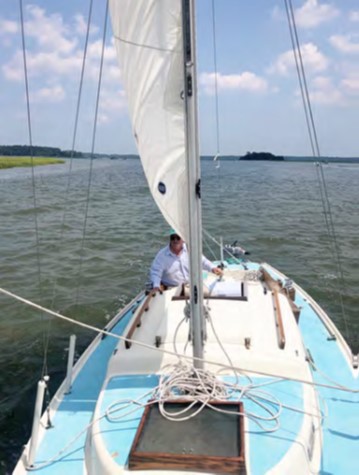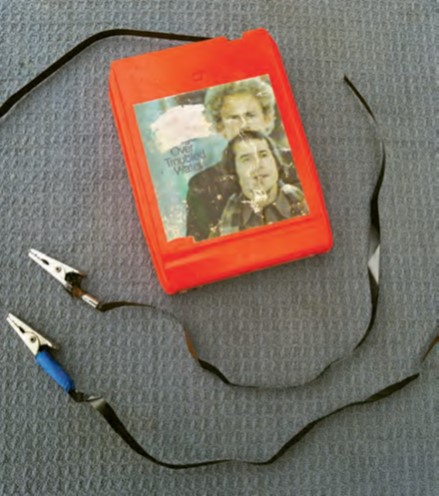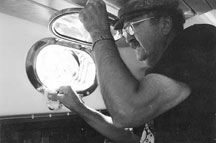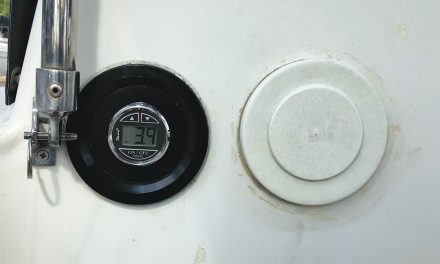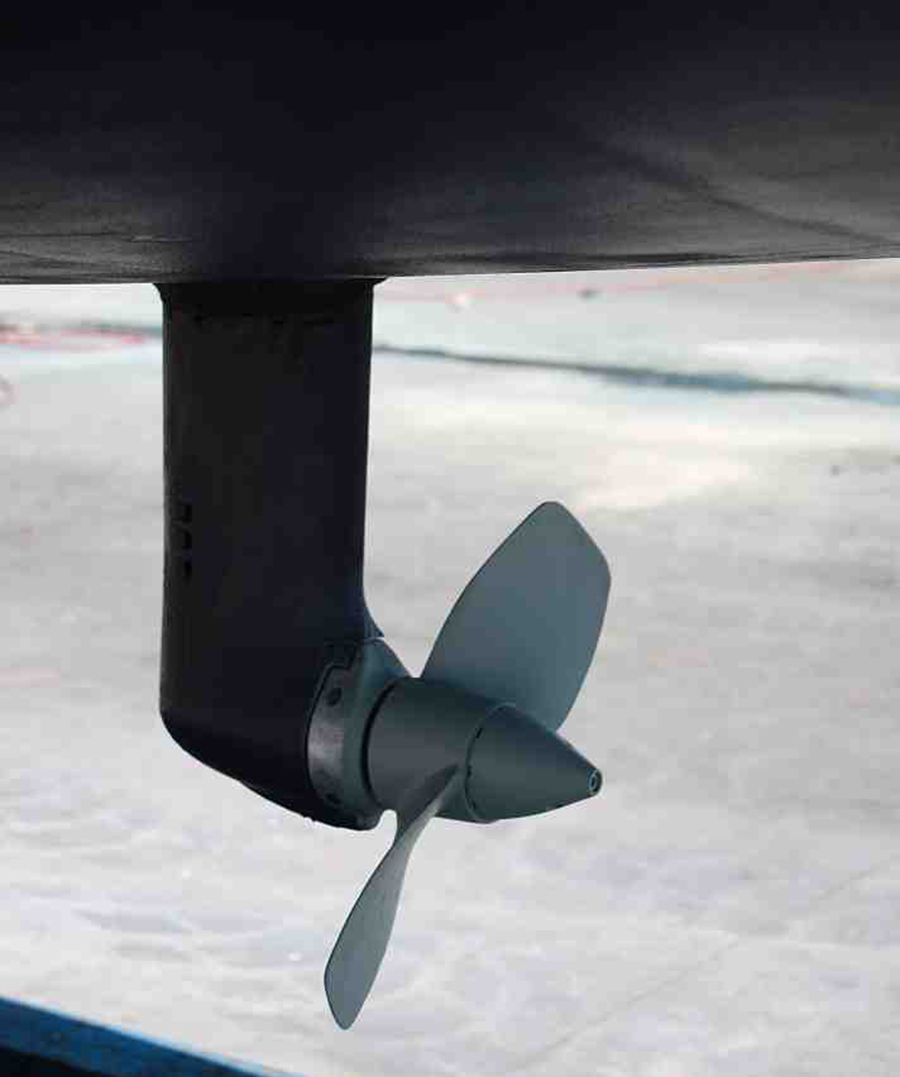Issue 143: March/April 2022
I am fortunate to sail my 1962, Carl Alberg-designed Pearson Electra, Sea Gypsy, out of Bluffton, in the heart of South Carolina’s low country. As a self-acknowledged nature lover, I can’t get enough of the May River and the extraordinary estuarine system that it’s a part of, miles of tidal creeks and rivers where it’s not uncommon to share the water with dolphins and all manner of sea and marsh birds.
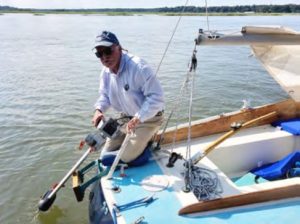
The electric motor, which incorporates the battery, is light enough that James can easily lift it on and off the boat’s motor mount.
Though tranquil on the surface, this is fast-moving water, with tidal falls as much as 8 feet. When the wind isn’t helpful, dependable auxiliary power is a must, even for my 23-foot boat that weighs only a little over 3,000 pounds.
My Pearson came with no engine. In July 2021, I decided I wanted to go with an all-electric outboard system. My motivation was simple: I didn’t want to disturb the natural habitats of the sounds and rivers so abundant with tidal marshes, spartina grass, and an alluring array of flora and fauna including nesting pelicans and egrets.
After some extensive online research and speaking with owners of electric motors, I opted for a 3-hp Torqeedo Travel 1103 CL electric motor. The system is one unit that integrates a lightweight, high-performance lithium battery, an onboard computer that provides GPS-based range calculation, mounting clamps, and shaft and prop. It’s light enough that even my 72-year-old self can bend with modest agility over the stern and hang the engine securely on the bronze bracket. When I leave the boat, I carry it in a case that weighs only 34 pounds; it’s about the size of a golf bag, allowing the shaft to fit perfectly inside.
There has been, admittedly, a learning curve. On my first trip aboard Sea Gypsy with the new motor, I was fighting the tide and realized belatedly that the engine had not been fully charged. There I was, nearly 300 long yards from my arrival at the dock, when the engine died. Without any breeze to help me along, I broke out a single paddle, and working up a South Carolina sweat, got safely to my friend’s dock.
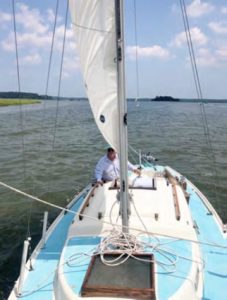
Sea Gypsy under sail on the May River in South Carolina.
I realized later that I’d run out of juice because I was operating the new engine at maximum speed (about 4.7 knots), running it against the fast-moving tide. I’d splashed Sea Gypsy at the nearby public launch, approximately 2 nautical miles upriver. Foolishly, I never checked the battery’s charge or range indicator until it was too late, and the engine had cut off.
Knowing that I never wanted to repeat that incident, I quickly ordered a solar panel, designed by Sun Powered Yachts in Hawaii, but belatedly realized it wasn’t compatible with the Torqeedo’s battery. So, it’s now my practice after sailing to remove my Torqeedo from the boat and always plug it in at home; I’ve also bought a second battery that I can keep charged as a backup.
And, to further combat “range anxiety,” I’ve purchased a Jackery Explorer 1500 portable power station that lets me plug in the battery when under sail. It can supply 1000 watts of power using multiple output ports and features a lithium battery.
True, it cost me $2,700 to make this clean wake, about $1,500 more than a standard 6-hp outboard would have cost. But there’s no fuel, no exhaust, and best of all, barely any sound when I am slipping along among the grasses and birds. The winds of change, propelled by this blue electric revolution, will certainly be powering me without a carbon footprint into the next stage of my sailing life.
James Borton is a former foreign correspondent in Hong Kong for The Washington Times, a national fellow in the Explorers Club, and an avid sailor out of the May River in Bluffton, South Carolina.
Thank you to Sailrite Enterprises, Inc., for providing free access to back issues of Good Old Boat through intellectual property rights. Sailrite.com

